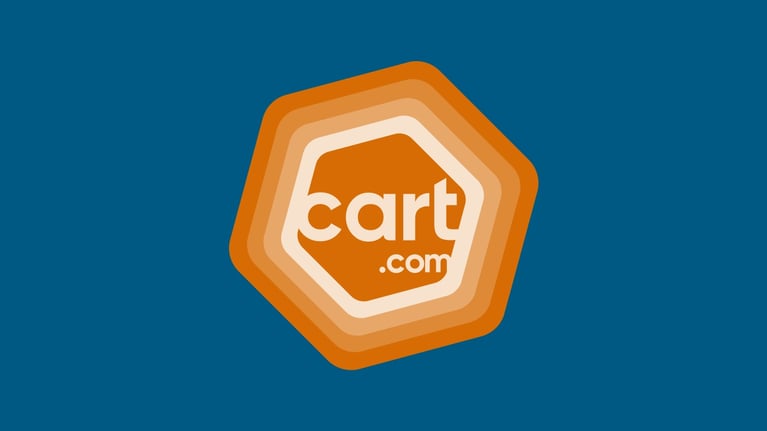The B2B2C ecommerce business model is a relatively new and innovative way of doing business that combines the strengths of both the B2B and B2C models.
In this type of model, the company operates as both a B2C and a B2B commerce entity, selling to both businesses and consumers. This allows for greater reach and more sales, as well as increased efficiency due to the streamlined process.
Let's answer some basic questions: What is B2B2C ecommerce? What is a B2B2C model? How does it differ from other models? What are the advantages of B2B2C ecommerce? What are some B2B2C ecommerce examples?
What Is a B2B2C Business Model?
B2B2C ecommerce is a business model that merges the business-to-business (B2B) and business-to-consumer (B2C) models. In a B2B transaction, two businesses conduct transactions with one another. In contrast, in a B2C transaction, a business conducts transactions with individual consumers.
B2C business examples include retailers such as Amazon, Walmart, and Target. They're in this category because they deal directly with customers who purchase goods and services for personal use.
B2B business examples, on the other hand, include companies that primarily sell products and services to other businesses rather than individual consumers. Some common B2B business examples are dental supply companies, construction companies, and major corporations such as General Electric.
A B2B2C ecommerce model allows businesses to sell products and services to individual consumers through an intermediary. This intermediary can be a marketplace, an online retailer, or even a social media platform.
When a B2B2C business model is used, the end consumer understands that the product or service they're buying from the intermediary comes from the original company. The products aren't white-labeled or rebranded so that they're presented as the intermediary's own.
B2B2C ecommerce businesses can reach a much wider audience than businesses that only sell to other businesses (B2B) or only to consumers (B2C). That's why this type of ecommerce model has become increasingly popular, in addition to its advantages over traditional B2B and B2C models.
How B2B2C Differs From Channel Partnerships
Channel partnerships are similar to B2B2C ecommerce since they involve businesses selling to consumers through an intermediary. There are two types of channel partnerships: direct and indirect.
Direct channel partnerships involve businesses selling products and services to consumers through an intermediary with whom they have a direct relationship, such as a distributor or retailer. An example is Apple's relationship with Best Buy.
Indirect channel partnerships involve businesses selling products and services to consumers through an intermediary with whom they don't have a direct relationship, such as a marketplace or online platform. An example is Amazon's relationship with small businesses that sell on their site.
Channel partnerships, in general, are a common way for businesses to sell products and services to consumers.
B2B2C ecommerce businesses, on the other hand, have a direct relationship with both the intermediary and the consumer. In this type of business model, businesses sell products and services to consumers through an intermediary, but they don't rely on the intermediary to reach their target market.
There are several key differences between channel partnerships and the B2B2C model.
In a channel partnership, the intermediary is typically a distributor or retailer with an existing relationship with the consumer. Essentially, the distributor or retailer is a middleman who resells the goods to end consumers. In a B2B2C ecommerce model, the intermediary is often a marketplace or online platform that connects businesses with consumers, not just a middleman.
Another difference is that channel partnerships are typically exclusive, meaning the business can only sell its products through the intermediary.
In a B2B2C ecommerce model, businesses are not limited to one intermediary and can sell through multiple channels. This means that businesses can use both Amazon and eBay as intermediaries, for example.
In terms of product price, businesses usually charge the same price for their products regardless of whether they're sold through an intermediary in a channel partnership or directly to consumers. However, in a B2B2C ecommerce model, businesses can offer different prices for their products depending on the intermediary.
For example, a business might charge a lower price for products sold on its own website than those sold through Amazon.
The last key difference is that in a channel partnership, companies typically don't have direct business relationships with their consumers. In a B2B2C ecommerce model, businesses can develop a direct relationship with the consumer through loyalty programs, marketing campaigns, and other methods.
What Are the Advantages of the B2B2C Model?
There are many advantages of adopting the B2B2C ecommerce model. They include a smooth and seamless customer experience, access to larger customer bases, and reduced overhead costs.
Creates a Seamless Experience for Customers
The B2B2C ecommerce model is advantageous because it creates a seamless experience for customers. In a B2B2C ecommerce business, the company operates as both a B2B and a B2C entity, selling to both businesses and consumers. This allows greater reach and more sales, as well as increased efficiency due to the streamlined process.
Businesses can deliver a smooth customer experience by offering a one-stop shop for all of their product needs. They can buy what they need from the company's website or through an intermediary such as a marketplace or online retailer. The company can also use social media platforms to reach consumers.
In addition to reaching a larger audience, the B2B2C ecommerce model also offers improved customer service. When businesses sell products and services only to other businesses (B2B), they're limited in the ways they can serve their customers. However, by using a B2B2C ecommerce model, the company can serve its customers through an intermediary, such as a marketplace or online retailer.
This allows the company to offer greater flexibility and convenience to its customers. They can buy what they need from the company's website or through the intermediary. Companies can also use social media platforms to serve their customers.
Offers Companies Access to Larger Customer Bases
The B2B2C business model offers companies access to larger customer bases than traditional B2B or B2C models. In a B2B transaction, two businesses conduct transactions with one another.
In contrast, in a B2C transaction, a business conducts transactions with individual consumers. A B2B2C ecommerce model also allows businesses to sell products and services to individual consumers through an intermediary. This intermediary can be a marketplace, an online retailer, or even a social media platform.
As a result, B2B2C ecommerce businesses can reach a much wider audience than businesses that only sell to other businesses (B2B) or only to consumers (B2C).
Reduces Overhead Costs and Provides Greater Business Opportunities
One of the main advantages of the B2B2C ecommerce model is that it helps businesses reduce their overhead costs. When a company sells products and services only to other businesses (B2B), it's limited in the number of business customers it can reach. However, by using a B2B2C ecommerce model, the company can reach a larger audience by selling through an intermediary.
This not only increases sales but also helps reduce costs because the company no longer has to invest in marketing and advertising to reach new customers. It can rely on the intermediary to do this for them.
The time to care about online marketplaces is now. They're the next avenue that'll help you scale and win, especially with ecommerce retail purchases in 2021 amounting to approximately $4.9 trillion worldwide. This figure is expected to grow by 2025, reaching $7.4 trillion.
What Are Challenges You Can Expect With This Type of Business Model?
While the B2B2C business model offers a host of attractive benefits for brands, it's not always easy to implement. You can expect to face the following challenges when implementing B2B2C ecommerce:
Differentiation When It Comes To Branding
When it comes to branding, it can be hard for B2B2C businesses to stand out from the competition. This is because B2B2C businesses are selling through an intermediary, such as a marketplace or online retailer. As a result, B2B2C businesses need to make sure their branding is strong enough to stand out from the other brands on the intermediary's platform.
This can be a challenge, but it's not impossible. One way B2B2C businesses can differentiate their brands is by offering unique products and services that the intermediary doesn't carry. Another way is to focus on building a strong relationship with the intermediary.
For example, B2B2C businesses can provide the intermediary with exclusive deals or discounts that other brands don't have access to. By doing this, B2B2C businesses can make their brands more attractive to the intermediary's customers with help from the intermediary itself.
Proper Promotion and Marketing of the Products
Marketing challenges arise when a business must develop and differentiate marketing messages targeted to other businesses and the end consumer. Apart from targeting different audiences, there's also the challenge of ensuring your B2B2C partners promote your products fairly.
Ensuring proper promotion and marketing of products and services is necessary when using an intermediary because customers may otherwise not be aware of your brand. These customers could also be seeing competing products on the intermediary's platform. Therefore, it's important to ensure the promotion of your products and services in a way that's favorable to your brand.
One way B2B2C businesses can promote their products is by providing the intermediary with marketing materials such as product images and descriptions. Another way B2B2C businesses can promote their products is by offering the intermediary exclusive deals and discounts, which can be passed on to consumers.
Sharing of Data Between Partners
Data sharing is another challenge faced by B2B2C businesses. This is because B2B2C businesses need to share data with their intermediary partners, such as marketplaces and online retailers.
The reason data sharing is necessary is because B2B2C businesses need to provide their partners with information about their products and services. This information is necessary so the intermediary can accurately promote and sell the B2B2C business' products.
However, data sharing can be a challenge because B2B2C businesses need to ensure their partners don't misuse or mishandle their data. B2B2C businesses can protect their data by ensuring their partners sign a non-disclosure agreement (NDA).
Examples of B2B2C Ecommerce Companies
There are many B2B2C ecommerce companies out there. Examples of B2B2C ecommerce companies include:
- Amazon: Amazon is a B2B2C ecommerce company that sells books, electronics, and other items on its online marketplace.
- eBay: eBay is a B2B2C ecommerce company that sells various items, including clothes, electronics and collectibles, through its online marketplace.
- Alibaba: Alibaba is a B2B2C ecommerce company that sells various items, including clothes and electronics, through its online marketplace.
These online marketplaces are great B2B2C examples because consumers are using one business to order a product or service from another business.
Interestingly, Amazon, eBay, and Alibaba also implement sales models such as B2B. That's because other businesses can shop on these platforms, along with consumers. For example, if a manufacturer approaches Alibaba for a partnership, they increase their chances of being spotted and selling to other businesses.
C2B2C and C2B2B models are also implemented on online marketplaces since consumers can place their goods on these marketplaces and sell to other businesses or consumers.
Affirm and Shopify
Other examples of B2B2C partnerships are when an ecommerce retailer like Shopify partners with a financial services provider like Affirm to provide "buy now, pay later" services.
Affirm is a B2B2C ecommerce company that offers financing options for Shopify's customers.
This B2B2C relationship is beneficial for Shopify because it helps increase sales. Affirm's financing options make it easier for customers to make purchases on Shopify's platform.
This B2B2C relationship is also beneficial for Affirm because it helps increase its customer base. Customers who opt in understand they're working with Affirm, not Shopify, for the payment solution.
Instacart and Grocery Stores
Another example of a B2B2C partnership is Instacart partnering with grocery stores. Instacart is a popular grocery delivery service that delivers groceries from various stores in as little as one hour.
Instacart has partnerships with over 350 grocery stores, including Costco, Kroger, and Safeway. Customers who use Instacart can shop for groceries from these stores without ever having to step foot in them.
While Instacart charges customers a delivery fee, the fee is often lower than the cost of gas, making it a convenient and affordable option for many people.
The advantage of the B2B2C model for Instacart is that it doesn't have to worry about inventory, as that's all handled by the grocery stores. Instacart also doesn't have to worry about delivery, as its full-service Instacart shoppers handle it. These shoppers are independent contractors who accept orders, shop for them, and deliver them to customers.
This leaves Instacart free to focus on its core competency: providing convenient and easy-to-use grocery delivery services.
OpenTable and Restaurants
OpenTable is a B2B2C ecommerce company that provides an online platform for restaurants to manage reservations.
Over 60,000 restaurants use OpenTable's platform worldwide, including well-known chains like Olive Garden and Cheesecake Factory.
The advantage of the B2B2C model for OpenTable is that it helps restaurants fill their empty tables. That's because diners can use OpenTable to easily find restaurants with available reservations.
This is beneficial for both restaurants and diners because it helps improve the dining experience.
Meanwhile, OpenTable benefits from the transaction fees it charges restaurants.
Make Way for a Rise in B2B2C Ecommerce Businesses
As mentioned earlier, the B2B2C ecommerce business model is growing in popularity because it offers many advantages over other business models. These advantages include the ability to reach larger customer bases, create seamless customer experiences, and provide greater business opportunities while reducing overhead costs.
All these advantages can be beneficial for businesses looking to expand their operations. For example, a business that sells products or services to other businesses can use an ecommerce website to reach a larger customer base than it would be able to through traditional sales channels. It's beneficial for consumers, too, because it allows them to purchase products or services from various businesses in one location.
Additionally, an ecommerce website can help create a more seamless customer experience by allowing businesses and clients to purchase products or services online 24/7. This is beneficial for both the business and the customer, as it increases convenience and reduces the chances of missed opportunities.
You can also use ecommerce websites alongside partnerships with online stores such as Amazon to create a more memorable shopping experience. You have a good deal of creative control on such websites, meaning your pages can be designed in a way that best presents your brand.
Thankfully, businesses can take full advantage of today's technology to expand their market reach through the B2B2C model. Use Cart.com to design and build an online store that accommodates customer segmentation by allowing you to create multiple storefronts. This way, you can sell to other businesses and directly to consumers with extreme ease.





